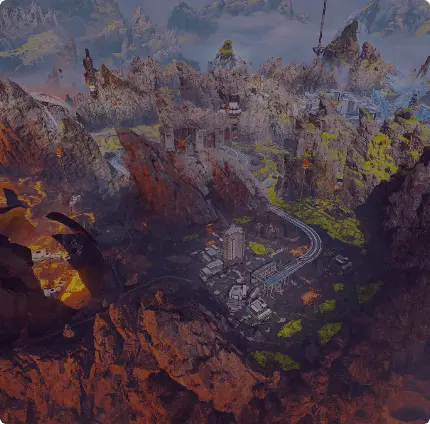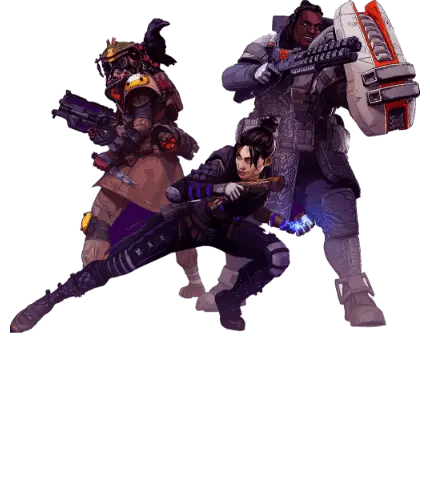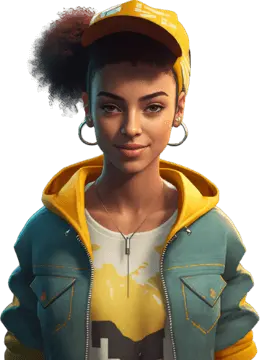Game developers are continually seeking innovative ways to captivate players and keep gameplay fresh, and one of the biggest recent advancements in game design is procedural content generation (PCG). It's a technique that leverages algorithms to create various elements of a game, from levels and quests to characters and their possessions. And when combined with artificial intelligence (AI), procedural content generation appears poised to enable more dynamic and engaging game experiences than ever before.
In this article, we will explore how AI can help dynamically generate game content. Why does this matter? It's because as gaming becomes more sophisticated, the demand for unique, expansive, and immersive worlds grows. Fortunately, AI-enhanced PCG is allowing developers to push the boundaries of what's possible in game design, such as with AI algorithms that analyze player behavior and preferences and adjust the game environment accordingly.
By understanding how AI integrates with PCG, you can better appreciate the intricacies behind your favorite games and the future possibilities that lie ahead. Whether you're a game developer or an avid gamer, AI-driven procedural content generation is already here—and its role is expected to expand. Let's dive in.
AI is a fast-moving topic; the connections between AI and gaming are sure to change and evolve. Any examples we provide of AI tools and methods used in specific games rely entirely on the manufacturers' own descriptions and are offered only to illustrate AI's potential capabilities.
What is Procedural Content Generation?
Procedural content generation, often abbreviated as PCG, is a method where algorithms are used to create game data in real-time, rather than manually crafting each element. The technique allows developers to produce vast amounts of content efficiently, whether it's generating expansive landscapes, intricate dungeon layouts, or unique characters. When done well, PCG ensures that no two playthroughs will be exactly the same, no matter how often you start-up your gaming laptop or tower.
The history of procedural generation dates back to the early days of computing, but it became particularly prominent in the gaming industry with the rise of rogue-like games. These games, known for their randomly generated levels and competition mechanics, showcased the potential of PCG to create seemingly endless replayability. Today, PCG is widely used in various genres, from open-world adventures to space exploration games, enhancing both the depth and breadth of gaming experiences.
One of the key advantages of procedural content generation is its ability to save time and resources. Instead of laboriously designing every inch of a game world, developers can rely on algorithms to fill in the details, allowing them to focus on other aspects of game development. Additionally, procedural content generation can lead to more immersive and unpredictable gameplay, as players encounter unique challenges and surprises in each new session.
Another compelling aspect of PCG is its flexibility. Developers can tweak parameters within the algorithms to achieve different artistic styles, gameplay mechanics, and levels of difficulty. This customization capability means that PCG can be tailored to fit the specific vision of the game, whether it's a whimsical adventure or a gritty survival contest. Furthermore, procedural content generation can enable smaller studios with limited resources to compete with larger developers by creating rich, varied content without needing a big workforce.
A prime example of PCG in action is the game "No Man's Sky" by Hello Games. It's a space exploration game that uses procedural generation to create an entire universe with 18 quintillion planets, each with its own unique ecosystems, landscapes, and creatures. Such an expansive world would be impossible to craft manually, but with PCG, players can explore endlessly and rarely enter similar environments.
Using AI for Procedural Content Generation
Artificial intelligence brings a new level of sophistication to procedural content generation. By integrating AI algorithms, developers can create more complex and adaptive game content that responds to player actions and preferences. AI-driven PCG can generate everything from intricate storylines to dynamic environments, ensuring that each player's experience is uniquely tailored.
At its core, AI in procedural content generation uses machine learning models to analyze vast datasets, learning patterns and preferences that can be applied to game content creation. For instance, an AI might study thousands of dungeon layouts to understand what makes a specific game level both challenging and enjoyable, then use this knowledge to generate new dungeons on the fly. This capability allows for highly personalized gaming experiences, where the game content and level of difficulty adjust based on each player's skills and behavior.
Moreover, AI-enhanced PCG can improve the narrative aspects of games. By analyzing player choices and storytelling preferences, AI can dynamically craft quests and story arcs that resonate with individual players. This leads to more engaging and emotionally impactful narratives, as the game world evolves each time you play.
We're "all in" on AI, with a growing selection of Lenovo AI PCs offering personalized artificial intelligence solutions to make everyday tasks easier for business, learning, gaming and more. They're available with exclusive AI applications like Lenovo Learning Zone and Lenovo AI Now, helping lift computing to new levels. At Lenovo, our goal is delivering smarter AI for everyone, with tools that learn what you need, protect your work and data, and can grow along with you.
What's an AI PC? Quite simply, it's the future of computing. Someday, we'll just assume our PCs have built-in artificial intelligence. But until then, Lenovo is the place to shop for today's most advanced AI-enhanced laptops. And as you shop, be sure to check out models with the CoPilot+ PC label—a sign that the system offers both amazing AI capabilities and is built with the latest AI-boosting hardware, too.
Another exciting application of AI in procedural content generation is the creation of virtual characters and assets. AI can generate highly detailed and diverse character models, complete with unique behaviors and interactions. This not only enriches the game world but also reduces the burden on artists and designers, who can instead focus on refining the overall aesthetic and feel of the game.
AI also can play a crucial role in balancing and testing game content. Traditional testing methods can be time-consuming and may not cover all possible scenarios. However, AI can simulate countless playthroughs to spot potential issues and perfect the content for better gameplay experiences. Such automated testing ensures that procedurally generated content maintains high quality and provides a fun, fair challenge for all players.
A popularly-cited example of AI-driven PCG is the game "Left 4 Dead" and its sequel “Left 4 Dead 2” by Valve. The game's AI Director is described as dynamically adjusting the competitive pacing and difficulty—all based on the players' previous performance and apparent stress levels. This helps ensure a consistently engaging experience where the intensity ebbs and flows, keeping even regular esports players on their toes.
The Future of AI and PCG
As experts look to the future, the combination of AI and procedural content generation promises to revolutionize the gaming industry even further. With advancements in machine learning and data analytics, AI-driven PCG is expected to become increasingly sophisticated, capable of creating even more detailed and immersive game worlds.
One potential development is the use of AI to generate entire game ecosystems. Imagine a game where not only the landscape and quests are procedurally generated, but also the flora, fauna, and weather systems. AI can simulate ecological dynamics, creating a living, breathing world that evolves over time based on player interactions. This level of complexity would provide unprecedented depth and realism, making each playthrough a truly unique experience.
Additionally, AI could enable more collaborative and community-driven content creation. By analyzing player-generated content and feedback, AI can aid in refining and expanding the game world, incorporating the best ideas from the community. This participatory approach could lead to richer and more diverse gaming experiences, as players contribute to the ongoing evolution of each game.
The integration of AI and PCG also opens up new possibilities for accessibility in gaming. AI can tailor content to accommodate different skill levels and preferences, ensuring that games are enjoyable for a wider audience. For example, AI may be able to adjust the difficulty of puzzles or combat encounters based on a player's performance, providing a balanced and satisfying experience for everyone.
Looking further ahead, AI and PCG could converge with emerging technologies such as virtual reality (VR) and augmented reality (AR) (learn more about gaming accessories). Imagine a VR game where the environment adapts in real-time to your movements, or an AR game that generates quests based on your real-world location.
Conclusion
The synergy between AI and procedural content generation represents a significant leap forward in game development. By harnessing the power of AI, developers can create dynamic, personalized, and highly replayable game content that captivates players and keeps them coming back for more.
From generating intricate levels and quests to crafting immersive narratives and detailed characters, AI-driven PCG is transforming the way we experience games. As technology continues to advance, the future of gaming looks brighter than ever, promising innovative and unforgettable adventures for players around the world.
And the impact of AI and PCG extends beyond entertainment. These technologies are being explored for applications in education, simulation training, and even therapeutic environments. The ability to create adaptive and responsive virtual worlds holds immense potential for various fields, showing the far-reaching implications of AI-driven procedural content generation.












